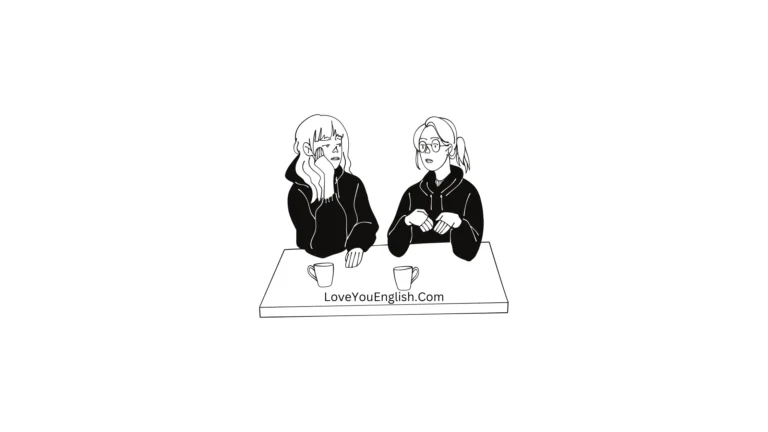Conversations in English About Clothing and Fashion
Alice: Hey, Jamie! Have you ever thought about how traditional clothing influences modern fashion?
Jamie: Absolutely, Alice! It’s fascinating how traditional garments inspire contemporary designs. For example, I’ve seen high-fashion collections that incorporate traditional patterns or fabrics from different cultures.
Alice: Yes, and it’s not just about patterns. Traditional garments often have unique silhouettes and intricate craftsmanship. Take the kimono from Japan or the sari from India. These clothes are not only beautiful but also carry deep cultural meaning.
Jamie: That’s so true. Take the kimono, for instance. It’s more than just clothing; it represents Japanese heritage and carries a lot of significance, depending on the colors and patterns. I read that different types of kimonos are worn for different occasions, like weddings or tea ceremonies.
Alice: Exactly! And the sari is another great example. It’s incredibly versatile and can be draped in various styles depending on the region. Plus, the fabric and embellishments can tell a story about the wearer’s background and status.
Jamie: Speaking of fabric, have you noticed how some traditional textiles are making a comeback in modern fashion? For instance, ikat or batik prints are now used in contemporary clothing. It’s a great way to honor traditional techniques while making them accessible to a global audience.
Alice: Definitely. It’s also interesting how traditional clothing influences seasonal fashion trends. Many designers look to historical garments for inspiration. For example, the Victorian era has influenced modern fashion, especially with its intricate detailing and structured silhouettes.
Jamie: I agree. It’s like a continuous cycle of inspiration. Traditional elements are modernized and then come back into fashion in a new form. It’s a way to preserve cultural heritage while adapting to contemporary tastes.
Alice: And it’s not just about aesthetics. Traditional clothing teaches us a lot about history and social customs. For instance, the way different cultures use clothing to signify social status or cultural identity is really fascinating.
Jamie: Absolutely. Clothing has always been a reflection of society’s values. Traditional garments offer insights into past societies, their values, and their interactions. It’s like wearing a piece of history!
Alice: It really is. And it’s important for designers and consumers to approach traditional clothing with respect. If traditional elements are used thoughtlessly, they can be appropriated or misunderstood.
Jamie: Yes, cultural appropriation is a real concern. When incorporating traditional elements into modern fashion, it’s essential to acknowledge their origins and respect them. Collaborating with people from those cultures or learning about the history behind the garments can help.
Alice: Definitely. It’s about celebrating and respecting diverse cultural heritages. Traditional clothing has so much to offer in terms of inspiration, but it’s crucial to do so with a genuine understanding and appreciation.
Jamie: I couldn’t agree more. The way traditional clothing continues to influence fashion shows its enduring appeal and significance. It’s a testament to the richness of cultural expression and the creativity of fashion designers who draw from it.
Alice: Well said, Jamie. It’s a great reminder of how interconnected our world is through fashion and culture. I love how traditional clothing can serve as both a bridge to the past and a source of inspiration for the future.
Jamie: Absolutely, Alice. It’s a beautiful fusion of history and innovation, and it’s exciting to see how traditional elements continue to shape modern fashion.
Alice: Agreed! I think there’s so much more to explore in this area. Maybe we should look into some specific examples of how traditional clothing has influenced current fashion trends.
Jamie: That sounds like a great idea! We could explore different cultures and see how their traditional garments are being interpreted in today’s fashion world.
Alice: Let’s do it! It’ll be a fun and enlightening journey.
Conversation in English About Clothing and Fashion (Part 2)
Sophia: Hey, Liam! I was reading about how traditional clothing is making a comeback in modern fashion. Have you noticed that trend too?
Liam: Hey, Sophia! Yes, I’ve seen that. It’s interesting how traditional elements are being incorporated into contemporary designs. For example, I’ve noticed a lot of Western designers using traditional African prints or Asian fabrics in their collections.
Sophia: Exactly! And it’s not just about the fabrics. Sometimes it’s the techniques or the overall silhouette that gets a modern twist. I’ve seen designers experimenting with the structure of traditional garments like the Japanese hakama or the Scottish kilt.
Liam: That’s a great point. The hakama, for example, is a traditional Japanese garment that’s being reimagined in modern fashion. Its wide-legged design and pleating are influencing current trends.
Sophia: Yes, and the kilt is also making its way into fashion shows. It’s no longer just a symbol of Scottish heritage; it’s being reinterpreted in different ways, from casual wear to high fashion. It’s amazing how traditional pieces can evolve.
Liam: Definitely. And it’s important to note how traditional clothing often carries specific meanings. For example, the color and style of a sari or kimono can signify different social or ceremonial aspects. It’s like each garment tells a story.
Sophia: Absolutely! When these elements are used in modern fashion, it’s important to be mindful of their original context. Sometimes, the cultural significance can get lost or misunderstood.
Liam: True. Designers need to approach this with sensitivity and respect. Incorporating traditional elements should honor their origins and significance.
Sophia: I agree. It’s wonderful to see traditional clothing influencing modern fashion, but it’s important to educate people about the cultural context. That way, the appreciation for these garments can be more meaningful and informed.
Liam: Absolutely. Traditional clothing also influences global fashion. For instance, using patterns from indigenous cultures in global trends sparks conversations about cultural exchange and appreciation.
Sophia: Yes, and it can lead to greater awareness and respect for different cultures. When people see traditional clothing celebrated in modern fashion, it fosters an appreciation for cultural diversity.
Liam: Exactly. It’s a way of bridging cultures and sharing stories through fashion. Fashion can be a platform for cultural dialogue and understanding.
Sophia: Absolutely! I’ve noticed that traditional clothing isn’t just influencing high fashion. It’s also making its way into everyday wear. For example, traditional prints and textiles are showing up in streetwear and casual fashion.
Liam: That’s a great point. It’s exciting to see traditional elements adapted for everyday use. It makes these garments more accessible and allows people to connect with different cultures casually.
Sophia: Exactly! It shows how adaptable traditional clothing can be. It’s no longer just for ceremonial occasions; it’s becoming a part of everyday fashion in a new and exciting way.
Liam: It really is. The fusion of traditional and modern styles opens up many possibilities. It keeps cultural heritage alive while making it relevant in today’s fashion landscape.
Sophia: I couldn’t agree more. It’s a beautiful blend of the past and present. There’s so much potential for innovation in how traditional clothing can continue to inspire modern fashion.
Liam: Absolutely. It’s a fascinating topic with so many layers. I’m excited to see how this trend evolves and what new ways traditional clothing will influence fashion in the future.
Sophia: Me too! It’s an exciting time for fashion and cultural appreciation. Let’s keep an eye on how traditional elements are being reimagined and celebrated in the fashion world.
Liam: Definitely. It’ll be interesting to see how this trend unfolds. Thanks for the great conversation, Sophia!
Sophia: Anytime, Liam! It’s always fun to chat about fashion and culture.
Read more conversations:
- Spoken English Conversations at A Hotel Reception
- English Conversations About Vintage & Thrift Shopping
- English Dialogues About Art
- Spoken English Conversations at A Family Outing
- Spoken English Conversations at An Office




